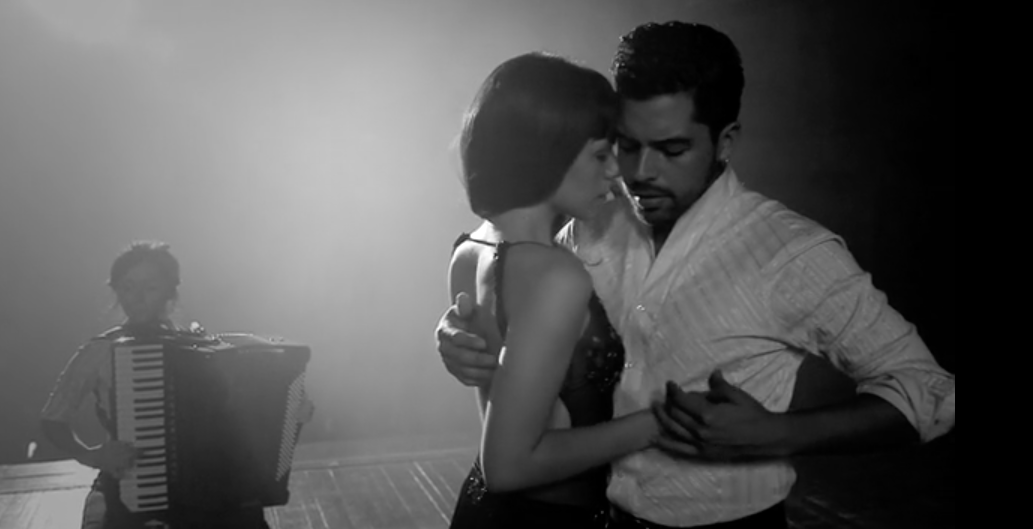Vals 1940
Composer: Juan Carlos Graviz
Lyrics: Juan Carlos Graviz
Orchestra: Juan D’Arienzo
Singer: Héctor Mauré
Performance: Buenos Aires, Dec 12, 1940, RCA Victor Record No. 39197-B
Curated and Translated by Luigi Seta
Tango Talks! (El tango nos habla)

Esta letra se prodiga en alabanzas a la belleza de la persona que amamos… pero que también no hemos conseguido su amor, inalcanzable y distante… ¿Por qué el título Flor Del Mal? ¿Tal vez el protagonista presiente un futuro tóxico? ¿Tal vez sentido común? Contradicciones que el Tango nos presenta… Ustedes serán los jueces.
This lyrics is lavishly praising the beauty of the person we love ... but we also have not got her or his love, unattainable and distant ... Why the title Evil's Flower? Maybe the protagonist senses a toxic future? Maybe common sense? Contradictions that Tango presents to us ... You will be the judge.
Acerca del Cantante / About the Singer Héctor Mauré
(Nombre real / Real name: Vicente José Falivene)
En el año 1940 el maestro D’Arienzo pierde todos sus músicos incluyendo el cantante Alberto Echagüe a manos de la nueva orquesta formada por Juan Polito. D’Arienzo crea una nueva orquesta que incluye a los cantantes Alberto Reynal y Carlos Casares. Al final de ese año, Carlos Casares es reemplazado por Héctor Mauré. Con Mauré la orquesta toma un estilo más melódico y no tan acentuadamente rítmico.
In 1940 D'Arienzo sees all his musicians leave, including Alberto Echagüe (to the new orchestra led by Juan Polito).He forms a new orchestra that will include the singers Alberto Reynal and Carlos Casares. At the end of that year, Carlos Casares is replaced by Héctor Mauré.With Mauré, the orchestra acquires a more lyrical, less rhythmically obsessed style.
Su línea interpretativa era dramática y al mismo tiempo melódica. Una voz particular, de registro barítono atenorado, agradable timbre y clara dicción, voz potente, melodiosa y afinada, de corte gardeliano.
Mauré’s line of interpretation was dramatic and melodic at the same time. A particular voice of baritone register with tenor’s characteristics, pleasant timbre and clear diction, powerful, melodious and refined voice.
El 12 de diciembre de 1940, hace su debut en el disco con el vals de Juan Carlos Graviz “Flor De Mal”. Su última grabación con D'Arienzo fue el 21 de julio de 1944, con el tango “Amarras” (de Carlos Marchisio y Carmelo Santiago), fueron en total 50 registros.
On December 12, 1940 , makes his debut with the Juan Carlos Graviz waltz “Flor De Mal”, His last recording with D' Arienzo was the July 21, 1944 , with the tango “Amarras” (by Carlos Marchisio and Carmelo Santiago) were in total 50 records.
Mauré era el cantante que tal vez ha inspirado D'Arienzo para adaptarse a un estilo más lírico durante estos cuatro años.
Mauré was the singer that perhaps inspired D’Arienzo to a adapt to a more lyrical style for these four years.
Flor Del Mal
Vals 1940
Castellano:
En la oscura noche
De tus lindos ojos
Yo quisiera verme,
Como en aguas
De un tibio remanso.
Porque en esos ojos
Como en un remanso
No sé qué misterio,
Te subyugan
Te atraen y te matan.
Tú con esas flores
Que bordean coquetas
Las aguas del lago,
En la vida tuviste también
De tu rara belleza,
El encanto fatal
Que ya nunca podré olvidar.
Son tus ojos dos lagos dormidos
Ante la belleza, sol,
Tus ojeras divinas que son,
Elegidas de Dios para ser admitidas
Por la vieja herida de mi corazón.
|
English:
In the dark night
Of your pretty eyes
I would like to see myself,
As in waters
Of a warm backwater.
Because in those eyes,
Like in a backwater,
I do not know what mystery
Subjugate me,
Attract me... and kill me.
You, with those flowers
Flirtatiously bordering
The waters of the lake,
In life you also had
In your rare beauty,
The fatal charm
That I can never forget.
Your eyes are two sleeping lakes
BIn front of beauty, sun,
Your divine eyes that are
Chosen by God, to be received
By the old wound of my heart.
|
Danced by Celeste Medina and Andres Sautel
Andrés Sautel y Celeste Medina son extraoridnarios bailarines de tango de Argentina. Nacieron en La Plata, capital de la provincia de Buenos Aires.
Andres Sautel and Celeste Medina are very refined Tango dancers from Argentina. They were born in La Plata, the province capital of Buenos Aires.
Su excelente técnica de baile los llevó a una carrera muy exitosa. En los últimos años, comenzaron a construir un puente muy fuerte con la gente y con ellos mismos como bailarines, lo que los llevó a un trabajo con un mayor enfoque en la enseñanza, compartiendo sus experiencias como bailarines sociales, transmitiendo la cultura argentina y también el mensaje de que el Tango es un baile para todos, no solo para profesionales.
Their excellent dance technique brought them to a very successful career. In the last years they started to build a stronger bridge with the people and themselves as dancers, which brought them into a work with stronger focus in teaching, sharing their experiences as social dancers, transmitting the Argentinian culture and conveying the message that Tango is a dance for everybody, not just for professionals.
Now, Flor Del Mal in a Tanda
by DJ Luigi Tango






